Why do cucumbers crochet and what to do?
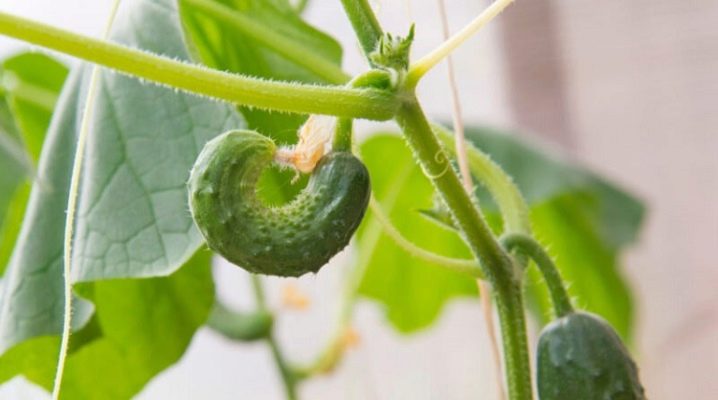
Cucumbers with an unusual shape simply do not exist. But hook-shaped vegetables at the same time are found on the plots, however, this does not cause delight, because such a result speaks of not the best reasons for the phenomenon and makes you fight for the harvest, as well as prevent a problem in the future.
Common Causes
Curved cucumbers, it should be said, are not such a rare occurrence. If a couple of similar specimens are typed on the whole bed, this is still all right, but when there are a lot of irregularly shaped cucumbers, then something needs to be done about it.
Curvature is a defect that can and should be combated. From a lack of nutrients in the soil to sharp temperature jumps, there are not so few reasons for the negative phenomenon.

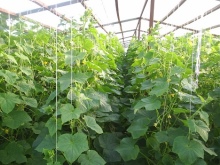
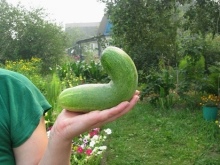
Let's find out what the cucumber is missing if it becomes hooked.
- Soil trace elements... Cucumbers do not need to be overfed, they need to get enough nutrients. Plants are demanding in the sense that they simply cannot assimilate a lot at once. They need a very dosed, fractional food. With this calculation: from 1 bush you want to get 30 kg of fruit, and then the plant will need somewhere around 25 g of nitrogen, 60 g of potassium, 15 g of phosphorus, 5 g of magnesium and 20 g of calcium. The cucumber is maximally "gluttonous" during the fruiting period. And if at this time there is not enough food for him, the fruits may be deformed. That is, it is a matter of timely, affordable, standardized feeding.
- Nitrogen... Lack of nitrogen can be determined by laboratory methods (but very few people do it), or it can also be based on such signs: slow growth of plants, thinning and woodiness of the lash as it increases in length, inhibition in the growth of the leaf plate, lack of new shoots, yellowing of ovaries, drying of flowers ... If the soil is acidic, it may be deficient in terms of nitrogen. Then you need to use nitrate nitrogen, if the soil is neutral and alkaline, feeding is carried out with ammonium nitrate.
- Potassium... For cucumbers to be sweet and crunchy, they need potassium. Those taste qualities that are declared by the variety will simply not be realized without this element. Potassium is a taxi driver helping to deliver nutrients from the ground to fruits and leaves. They will not grow without it or grow tasteless, bitter, and also crocheted.
- Correct crop rotation... From it, the cucumbers not only turn yellow and grow poorly, but also curl. In more detail, in the process of cucumber growth, colins, very harmful soil substances, are released. They are formed only when the crop is grown for a long time in one place. If earlier in the place of cucumbers there were crops that need the same feeding, the soil will also be depleted. And fertilizing is already an empty measure.
- Competent varietal selection... If varieties both pollinated by bees and self-pollinated grow nearby, this is a gross violation of agricultural technology. It is necessary to decide on the varieties, to distribute those that are pollinated in different ways.
- Lack of warmth. Cucumber growth problems aren't just due to the heat. For example, it will not matter for a plant to take trace elements from the ground if it is cold and the owners of the garden do not take any measures (additional heating). In this case, the fruits will thin out in the middle.
- Proper watering... Cold water is where cucumbers are dangerous. If you give them a cold shower, they will have problems with the absorption of potassium. And its unconditional value is mentioned above.
- Late harvest... If the cucumbers sit for a day or two in their place, the distribution of food will be disrupted, the development of new zelents will be slowed down.
- Lack of light. Very often, crooked cucumbers are found due to thickened plantings, when the plants simply do not receive enough light. If cucumbers grow in the shade of trees, if they were not pinched on time, if the loops are excessively long - this density also leads to the fact that hook-shaped specimens appear on the garden bed.
The answer to the question of what to do comes directly from this list. Do not admit what is in it. This also applies to cucumbers growing in the open field, and to those that are placed in a greenhouse.

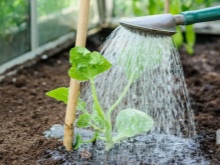

How to fix the situation?
Of course, there are so-called express measures, first aid. I must say, they do not always work. Sometimes they are not omnipotent, or they lead to changes, but insignificant. Still worth a try. What to do if cucumbers lack potassium:
- feed them with potassium sulfate (50 granules per square);
- feed them with a solution of potassium salt - 12-15 g per 5 liters of water (half a liter per plant);
- use a mixture of wood ash - half a liter per 10 liters of water (a liter will come out under a bush).
These options are for outdoor cucumbers. If the cucumbers are "bent" inside the greenhouse, the concentration of the compounds should be lower. If it is determined that the plant does not have enough nitrogen, it is necessary to eliminate its deficiency: the plantings are sprayed with a solution of urea (about 10 g per 2 l), after 3 days root feeding with ammonium nitrate is carried out - from 30 g / 10 l. Chicken droppings can also be used. But you cannot overfeed the plants with nitrogen - the bushes will be very active in gaining green mass.
Cucumbers bend if cold comes, which means:
- it is necessary to cover the beds at night with plastic wrap, geotextile or agrofiber;
- be sure to make them mulch: from sawdust to mowed grass and compost - everything is fine;
- you need to lay out bottles of water between the bushes, during the day the heating bottles will become hot, at night they will give their warmth to the cucumbers.
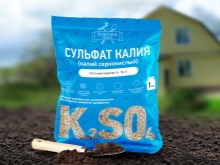
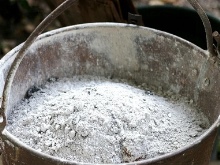

But if the cucumbers have become a "victim" of an unfortunate neighborhood, you need to spray them with a solution of boric acid (about 3 g per 10 liters), which will attract insects. Also, artificial hand pollination will not interfere, by the way, you can use a soft brush: tear off the corolla from the male flower to expose the stamens, and then touch the stigma of the pistil of the female flower (almost botanical reproductology). 1 male flower pollinates up to 5 female ones.
If all this is systematically observed, not forgetting to water and fertilize in time, crooked cucumbers in the harvest can be avoided. Particular attention should be paid to crop rotation - alas, this most obvious measure is often not followed. Accumulated harmful spores in the soil, as well as viruses, can damage any vegetables, and uneven cucumbers are often the result of refusal to crop rotation. Sick plants, which are fed by such a diseased soil, more often "give birth" to deformed fruits. Pests, by the way, also do not sleep, or rather, they doze all winter in the same soil, and by the season they wake up to attack a new crop.
To combat the drying out of the soil, it is not enough to water it - it also needs to be mulched. Firstly, mulch reduces the very need for irrigation, and secondly, it insulates the ground, which is more than essential for nighttime cold snaps. It, mulching, protects the soil from overheating, that is, it works in two directions at once.
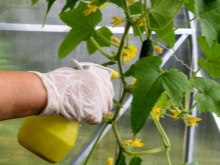
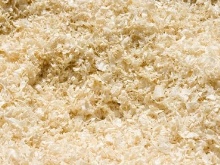
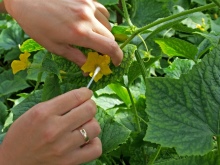
Prevention measures
Warning, no matter how trite it may sound, is always easier than fixing existing problems. And here, too, you can draw up a very specific working plan, where you can put a tick in front of each completed item.
In a polycarbonate greenhouse
To grow the perfect crop, greenhouses exist. In fact, conditions can be created in them so that no hooked fruits arise. There is high humidity, which cucumbers love, there is a lot of heat, which is also only good for them.In an enclosed space, according to experts, it is better to grow self-pollinated (parthenocarpic) varieties. And no bumblebees are required, and they must also be attracted otherwise.
And in order to get a harvest early, you need to grow seedlings at home, and then transfer them to a greenhouse. But only when the temperature in it is 15 degrees. By the way, it is better to bury the thermometer 20 cm into the ground, and then wait half an hour. Important! Of course, the nuances of disembarkation and departure depend on the region. Somewhere it happens earlier, somewhere later. The reference point should be precisely on the temperature indicators. By the way, the landing is sometimes accelerated, for which the earth is spilled with hot water. You can make a warm bed, cover it initially with a film.
What else is important to know:
- planting of plants provides for an interval of 50 cm (on average), the hole is pre-spilled with a manganese solution, fertilizers are applied to it;
- you need to water cucumbers regularly, if it's hot - literally every day (the plant has superficial roots, they will no longer reach the middle and deep layers of the soil for water);
- sprinkler irrigation - the best method, evaporation will be more efficient, the required level of humidity will be created in the greenhouse;
- feeding should be at least once a month, or better - twice, at first it will be a couple of weeks after planting (you must wait for the culture to fully adapt to the soil);
- the first top dressing involves an ash infusion, as well as a solution of mullein or chicken droppings, during the flowering period, cucumbers need potassium.
The temperature in the greenhouse should not be allowed to rise above 30 degrees. In this case, the plant needs to organize airing, and the bushes also need to be sprayed to prevent them from wilting. In hot weather, it sets in fatally quickly.


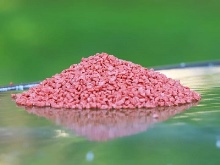
In the open field
If you decide to organize garden beds on the street, you first need to decide on a place. It should be open and sunny... The soil should be slightly acidic, nutritious and loose, it should retain moisture well. The soil can also be dug in half with humus, and wood ash can also be added there as an addition.
The features of growing cucumbers for the formation of beautiful fruits are described below.
- If cucumbers are planted in open ground in a rather cool region, it makes sense to make warm beds.... For them, rotted organic matter in a wooden building will be used (the technique is not the simplest, but even beginners will master it if they wish).
- Before sending seedlings into open ground, they must be hardened.... So with adaptation, everything will happen faster. The signal that the plant is ready for planting is the appearance of 4 true leaves on the seedlings. And still, stable warm weather should already improve - this factor cannot be denied. When the temperature has reached positive temperatures (13 degrees), you can send the cucumbers to the ground. Humus, ministries can be added there in advance. Then the bed is spilled with warm water, mulched with loose compost, covered with black non-woven material.
- If you decide to take the most risky step and send cucumbers into the ground itself, you can do this in late spring - early June... The well is first poured abundantly with water, it is warm. The seeds are lowered 2 cm into the ground, the interval is maintained at 20 cm in one row. The width between the rows will be 60 cm. And until 4–5 leaves appear on the samples, the earth will have to be loosened all the time. A crust should not form on it.
- In a cool summer, the risk of crooked cucumber growth increases significantly. But there is also a way out: at night, the bed is covered with a film. If the sun is actively beating during the day or the wind is playing out in earnest, it is covered with nonwoven material - it simply pounces on the arches. If there is not enough heat and moisture for cucumbers, this will automatically lead to a loss of yield, as well as to deformation of the fruit.
- Cucumbers will have to be watered exclusively with settled water, and they do not do this when the sun is active.... At the same time, excess moisture should evaporate before nightfall. Water, it must be remembered, also flushes out soil fertilizers, therefore sometimes rotted manure or compost is placed under the root of each bush. Mineral fertilizers are applied as needed, about once a week and a half, or a little more often. You can take turns with foliar dressing.
It seems that there are no unlisted conditions left. Of course, sometimes in the absence of any agricultural technology, fertile land gives an excellent harvest. But it happens that very diligent summer residents grow hooked cucumbers. In any case, the analysis of the conditions of the situation, monitoring the temperature and feeding clearly help.
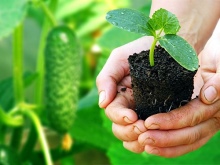















The comment was sent successfully.